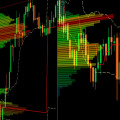Catching and understanding trend-following signals in Forex trading is essential for success. In this article, we will discuss the different types of trend-following signals that can be used in Forex trading, as well as how to interpret them correctly and maximize profits. Forex trading can be a complex and risky endeavor, but by understanding and utilizing trend-following signals, traders can maximize their chances of success. We will look at the different types of trend-following signals available, as well as the strategies that can be employed with each.
We will also examine how to identify and interpret these signals in order to make informed decisions about when to enter and exit trades. Finally, we will discuss the risks and rewards associated with trading using trend-following signals. The most basic definition of a trend-following signal is a signal that alerts you to an established trend in the Forex market. This type of signal is typically generated by an automated trading system or a technical indicator, such as the Moving Average Convergence Divergence (MACD). By following the signal, you can identify when a trend has started and adjust your trading strategy accordingly. The first step to using trend-following signals is to recognize the types of trends that exist in the Forex market.
Generally speaking, there are three types of trends: up trends, down trends, and sideways trends. An up trend is indicated by higher highs and higher lows, while a down trend is characterized by lower highs and lower lows. A sideways trend is one that moves neither up nor down but instead moves horizontally. Once you have identified the type of trend, you can then look for signals that will help you determine when it is time to enter or exit a trade. For example, if you are looking for an up trend in the EUR/USD pair, you can look for signals that indicate momentum is increasing (such as an increase in volume or a break out above a previous high).
Similarly, if you are looking for a down trend in the GBP/USD pair, you can look for signals that indicate momentum is decreasing (such as a decrease in volume or a break out below a previous low).In addition to identifying the type of trend and looking for momentum-based signals, it is also important to understand how to interpret the signal itself. For example, if you receive a signal that indicates an up trend in the EUR/USD pair, it may be a sign that prices are about to move higher. However, it could also be a false signal and therefore it is important to confirm the signal before taking any action. Once you have confirmed the signal, you can then decide whether to enter a trade or not. Finally, it is also important to remember that no signal is 100% accurate and it is always advisable to use risk management techniques such as stop losses and take profits when trading with trend-following signals.
By using these risk management tools, you can limit your losses if the signal turns out to be wrong and also protect your profits if the signal proves to be correct.
Conclusion
In conclusion, trend-following signals can be a useful tool for traders looking to increase their chances of success in the Forex market. By understanding how these signals work and how to interpret them correctly, traders can use them to inform their trading decisions with greater confidence. Trend-following signals are not a guarantee of success, but they can provide traders with valuable insights into market movements and help them make smarter trading decisions. With practice and experience, traders can learn to identify the most reliable trend-following signals and use them to their advantage. Trend-following signals can be a powerful tool for traders looking to increase their chances of success in the Forex market. By understanding how these signals work and how to interpret them correctly, traders can use them to inform their trading decisions with greater confidence and accuracy.With the right combination of technical analysis and trend-following signals, traders can gain an edge in the markets and maximize their profits.












Leave Reply